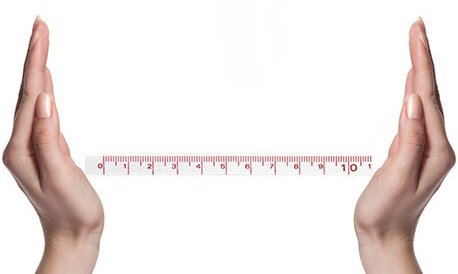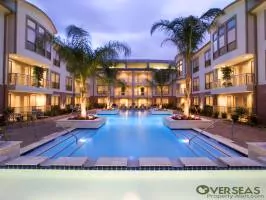You don’t make money when you sell a piece of real estate, but when you buy it. Before making any property purchase anywhere, you want to feel comfortable about the basic fundamentals. First, that you’re getting a good value…
Second, that you’re buying into a market where you expect values to increase over time…
Third, that you have a clear idea of your exit strategy.
Beyond these three basic fundamentals, here are six important items that I always consider.
Balance Your Location Against The Cost
You know that location is important when making a property purchase. However, you want to balance location against cost. Buying the most expensive piece of property in a great area can put you at a disadvantage when it comes time to sell. You’ll be competing with lower-priced competition. I recommend instead that you look for properties that are priced below the median for the area where you’re investing. That should help support value appreciation while also helping you to appeal to a broader market when it comes time to resell.
The Style Of The Property Is More Important Than You May Think
In addition to location, the style of a piece of property is also important. The trouble is that style is a matter of taste, and, unfortunately, you don’t know what taste your future buyer might have. This is why investing in a uniquely designed custom home is a crapshoot if your exit strategy is to resell. The house may have a great location, sitting right on the ocean… but if the style is unusual, you could have a hard time reselling.
I looked at a house for sale in Panama recently with a great location on the ocean. However, it was a custom house that the owner built for his family. The design was L.A. chic, with poor use of space. While the design and style worked for the owner, it probably wouldn’t work for many other people. I wasn’t surprised to hear that the guy has been having a hard time finding a buyer.
I remember another house I saw a couple of years ago on the coast of Nicaragua. It had been designed as a vacation house, so the architect hadn’t put much thought into making the space useful from a full-time living perspective. In this case, though, the owner was able to resell to someone shopping specifically for a vacation home on the beach.
Quality Is Important: But Make Sure The Level Fits Your Intended Buyer
You also want to take into account the quality of a property. If you’re buying a local-style house that you intend to rent and eventually resell on the local market, the quality of construction and of the finishing and fixtures doesn’t need to be anything more than what locals expect. However, if you’re buying with the expectation of renting or reselling to an expat buyer, then you want to buy something built and finished to expat standards.
One development I know in Belize has targeted foreign buyers but was built very inexpensively. This means pricing is attractive. The development has been able to sell on that point, but the quality isn’t what expats are looking for. Buyers who have tried to re-sell haven’t had an easy time of it. Prices are too rich for locals, but the finished product isn’t of the standard foreigners demand.
Size Always Matters… In Ways You May Not Realize

Size indeed matters when buying an overseas property
The size of your property is important as well. You may find a great deal on a five-bedroom property in the market where you want to invest, but how much demand, for rental or for resale, would a five-bedroom house command? And a 6,000-square-foot penthouse might be the deal of the century because the owner had to reduce the price to find a buyer… because, again, how big a market is there anywhere for 6,000-square-foot penthouse apartments?
Depending on the market and who you think your potential pool of future buyers might be, you are generally better off with more standard-sized properties of one, two, or three bedrooms. In a retirement or resort destination, two-bedroom condos are often the most sellable. On the other hand, they’re likely also to be the most common property type, which can work against you.
Rental Supply And Demand
Rental supply and demand should play an important role in your purchase decision when investing in a rental property. You want something you’ll be able to resell easily but also something that will generate a good rental return. In Paris, for example, the bulk of the short-term rental supply is studio and one-bedroom apartments. While those are the apartment sizes in greatest demand for rental, two-bedroom units have more flexibility and less competition. You can rent a two-bedroom unit to someone who only needs one bedroom, but it’s hard to rent a one-bedroom apartment to someone who has a need for two.
Understand Your Four “Pools” Of Future Buyers
Never buy a piece of real estate anywhere that you intend to resell at any time without understanding where you’ll source your eventual buyer.
Generally, you’re buying for one of these future buyer pools: another investor, a second home buyer (typically a non-local), an expat buying a primary home (for retirement, for example), and local residents. The best case is when you’re able to buy a property that could conceivably find a buyer among more than one of these pools.
The Investor
The investor is going to care about upside potential. This is the case regardless of property type (rental property, agricultural investment, or raw land for future development, etc.). The investor pool is generally the smallest and can be fickle when it comes to location and type of property.
Second Home Buyers
Second home buyers don’t need a second (or in some cases a third or a fourth) house. That is, they’re buying out of pure desire. Priorities for the second home buyer are location, ease of access, and property style and size. They want a good deal but aren’t buying based on the numbers… though an investment upside can help a second home buyer rationalize a purchase he wants to make anyway.
The Expat
The expat looking to move or retire overseas can be a good market, but this buyer can be budget-conscious. If you want to target this pool for future resale, buying below the median price in the area where you buy becomes even more important.
Locals
Locals aren’t generally looking to buy to live in gated communities or resort areas. When buying in an area where locals are part of your future buyers’ pool, consider access to public transportation, parking, and nearby amenities such as restaurants and grocery stores.
Few markets attract all four types of buyers, but when you find one that does, you’ll have an easier time selling, even in a down cycle. Examples of markets where you could potentially access all four buying pools are big, brand-name cities, including Paris, Buenos Aires, Medellín, and Barcelona.
Keep these six criteria in mind, and you’ll greatly improve your chances of making a successful investment abroad.
Lief Simon
Editorial Director
Global Property Advisor
Editor’s Note: Lief Simon has been making money investing in property around the world for more than 20 years. Thanks to investing offshore, Lief and his wife Kathleen have been able to secure their future retirement plan with retirement properties in four diverse countries. Aside from retirement properties, the couple also has a growing portfolio of income generating real estate around the world. Lief currently shares his insider tips, knowledge, experiences, and the best current investment deals on offer with our Global Property Advisor subscribers. Right now is a better time than ever to take advantage of a strong U.S. dollar, multiple ripe markets in crisis, tax deferrals or elimination vehicles, and many more advantages to today’s offshore real estate opportunities.
Join Lief and his readers in the world of offshore investments to strike gold in the biggest real estate Gold Rush in history…
Hi Lee,
Now that I am retired but with wife and two four-year-old kids, I am considering a few options to get away from Europe. Three places in Latin America (my Spanish is fluent) are on the top of the list. Please advise me on these locations: Otavalo, (north of Quito, Ecuador); Medellín, Colombia; and Arequipa, Peru.
I want a villa surrounded by lush gardens in a nice area, with neighbors not too close. Also, I’ll need a first rate school for the kids.
Thanks
Fernando
Portugal
As with many city choices, this question probably calls for a compromise when selecting from these three cities.
Otavalo is probably the best place on the list for finding a villa with some space around it… but I think you’d have fewer school options than in the other two cities.
Medellín would have great schools for the kids, but single-family homes with land are hard to find.
Arequipa would have a selection good quality schools; not as many as Medellín, but some excellent choices. And you can also find single family homes in town that may fit your criteria. Arequipa would be my first choice based on Fernando’s criteria.
Greetings Lee,
My second business is as a hard money lender. You indicate 17% yield is forecast with the mango investment. Normally I’d stay away from such a high yield because of the risk.
My entire portfolio of income producing notes is producing 10.5%.
What kind of security can I expect at 17%?
Thanks,
Ryan
First of all, if you’re netting a 10.5% yield with acceptable risk, you’re doing a super job already.
With respect to the mango plantation offer, I personally considered three major risk factors: interruptions to the water supply, wildfires (there’s a long dry season there), and market risk.
When I went to the plantation a few weeks ago, I found that they had three good water sources. The primary source was a system of collection basins, which collect rain and supply the irrigation system in the dry season. The second source was a river with good, all-year flow. The third is a system of wells… which has never had to be employed.
As to fire, the land has been cleared of brush and it’s irrigated. Also, rivers and roads supply a number of natural fire breaks. The fire risk is not zero, but I felt it was low… especially given that not all fires would ruin the trees.
As to the market, the 17% return was calculated based on sales to the local juice market, not the U.S. organic market. So even if the organic craze in the States fizzles out tomorrow—which is very unlikely—I’m confident of getting an acceptable yield.
That was my own personal thinking… for a better assessment of risk analysis, you can contact James Archer here.
Have a question? You can write to Lee here.

